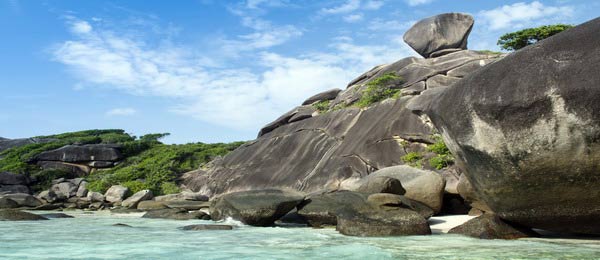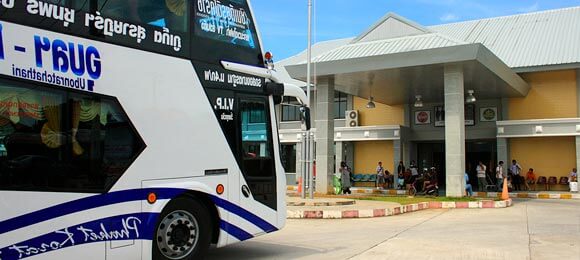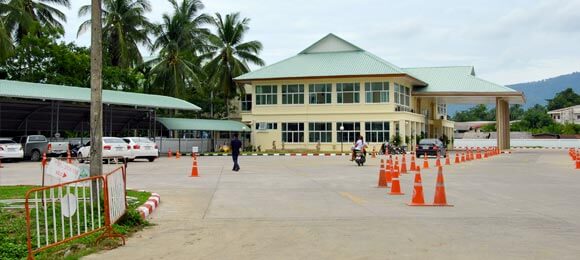 Similan Islands
Similan Islands
Similan is a group of islands in the Andaman Sea off the coast of Phang Nga, southern Thailand, just 65 Km west of Khao Lak and 85 Km north-west of Phuket. These jewels in the Andaman Sea are a true paradise for divers and absolutely perfect for snorkelling day-trips or just to enjoy sunbathing on a pristine tropical island. The Similan archipelago is the most beautiful and diverse dive destination in Thailand, and also one of the best ten dive destinations in the world, according to the National Geographic Society. The archipelago consists of a 25 km long chain of nine stunning and pristine islands and several granite rocks that barely break the sea surface. Similan archipelago was declared a national park in 1982 and appointed "Mu Ko Similan National Park", where "Mu Ko" means cluster of islands in Thai and "Similan" is a Yawi word, a Malayan dialect, which means nine. In 2001, the Ministry of Agriculture includes at Park two remote islands named Koh Bon and Koh Tachai, which are located at 22 and 60 km north of the archipelago. Each of the Similan Islands has a name as well as a number that running from south to north, these are: Koh Hu-Yong or # 1, Koh Pa-Yang or # 2, Koh Pa-Yan or # 3, Koh Miang or # 4, Koh Ha or # 5, Koh Payu or # 6, Kho Hin Pusar or # 7, 8 Koh Similan or # 8, 9 Koh Ba-Ngu or # 9, Koh Bon or # 10 and Koh Tachai or # 11. The Park Headquarters on archipelago is in Koh Miang, the island # 4, where are also some spartans bungalows and tents. The Park HQ on mainland is in Thap Lamu, a small fishing village located just 15 km from Khao Lak, which it is the nearest access to the islands. Admission fee is 500 Baht for adults and 300 Baht for children. Note that the park is closed due to rough sea from late April until 1st November, but dates may vary each year.Read More
 Features of Similan Islands
Features of Similan Islands
Approaching to the Similan Islands the first feature that strikes visitors are the huge smooth granite boulders dotted along the western coasts of most of the islands. Joints on the eastern shores they appreciate what make these islands rare precious diamonds into Andaman Sea. Here are other piles of large granite stones overlooking stunning coral sand beaches surrounded by crystal clear turquoise waters amaze each one of the lucky visitors. They are not comparable to any other beach along the coasts on Andaman Sea. Similan’s coasts are mainly made of granite, so there is no ground or mud along beaches; the sands are very clean, white and fine as talc powder. The waters near the shore are an amazing clarity as heavenly natural swimming pools. Most of stunning beaches are along the eastern coasts, the most protected from the Andaman Sea waves during the monsoon season. The underwater show which offers the islands is even more spectacular. In the shallow waters near the shore, even snorkellers can swim amongst large shoals of tropical fish and big Turtles. The imposing structures and the insulation offshore of Similan make these islands real centres of attraction for marine life, with huge shoals of plankton and baitfish that attracting predatory fish from many miles away. Here you will spot, in addition to usual reef fishes, the larger marine species in Thailand. Around all islands of archipelago there are frequent sightings of Manta Rays, Dolphins, Black Tip and White Tip Reef Shark as well as large and harmless Whale Sharks. The reefs close to islands are populated by a lot of fish species including Angelfish, Unicornfish, Butterflyfish, Parrotfish, Pufferfish, Jackfish, Sea Snakes and a huge variety of invertebrates, such as Octopus, Cuttlefish, Squid, and Shrimps. Between cracks and crevices are resident Crabs, Lobsters, Zigzag Clams and Oysters. Anemones and corals provide shelter to Clownfish, Surgeonfish, Harlequin Rasbora and Seahorses. The reef is a perfect habitat for Nubibranchs, Glassfish and other baitfish, which it is why you will see so many predators here, such as Lionfish, Scorpionfish and Moray Eels. On the bottom of the sea, between sand and scattered granite rocks rest large Groupers and Leopard Sharks. In the surrounding waters swim large schools of pelagic fish, such as Amberjack, Dorado, Barracuda and Trevally. The beauty of the Similan Islands is also due to the great variety of its stunning coral reefs. Underwater the scenery is really dramatic with large granite boulders covered with large gardens of colourful anemones, barrel sponges, superb gorgonian sea fans, soft and hard coral in the most varied forms, like deer staghorn, leaves and mushrooms. Some islands are flat, while others have quite high granite hills, with the Similan's highest top at about 250 metres a.s.l.; all interiors are rich in flora and fauna, with some hiking trails that allow exploring. The flora is made up of lush tropical evergreen vegetation, like ironwood, coconut palm, gum trees, jackfruit, rattan and bamboo. The islands are home to 27 species of small mammals, such as Monkeys, Dusky Langurs, Squirrels, Monitor Lizards, Bush Tailed Porcupine, Flying Lemur, Bats, a large variety of reptiles and 39 species of birds including Pintail Snipe, Grey Wagtail, Nicobar Pigeon, Pied Imperial Pigeon, Barn Swallow, Cattle Egret and Collared Kingfisher.Read More
Info
- Address Headquarter: Mu 1 Thap Lamu, Lam Kaen, Phang Nga
- Telephone: +66 7645 3272
- Website: www.dnp.go.th
- Admission fee: 500 THB for adults and 300 THB for children
Dinamic Map
 Smaller Islands
Smaller Islands
Koh Hu-Yong
Koh Hu-Yong is the most southern island of archipelago. It is covered with lush tropical vegetation and has the longest beach of all the nine islands, which is also the preferred nesting place for sea turtles. The small island is surrounded by shallow beautiful coral reef with a average depth around 10-15 metres, which is ideal for skorkelling, however, due to turtle hatching protection program the access to island is strictly forbidden.
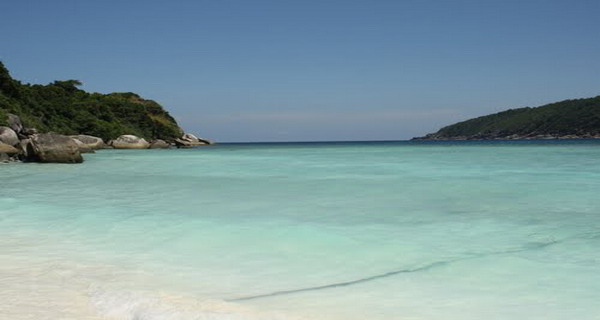
Koh Pa-Yang & Koh Pa-Yan
Koh Payang and Koh Payan are two similar island in the southern part of the Similan Park, the second belongs to a Thai princess. Both islands are characterized by rocky hills covered with lush tropical vegetation and beautiful granite formations around the coastlines. The islands also have beautiful beaches, but access is not allowed due to turtle hatching protection program and reef conservation. Nevertheless, a little awaythere are some interesting dive sites to which access is allowed. Between these Shark Fin Reef and Boulder City are the most frequented by the dive boats. Boulder City is located about 2 Km off the east coast of Koh Payan, and it is the southernmost diving site in the Similan Islands. As its name suggests, Boulder City is a huge submerged granite formation characterized by three main pinnacles surrounded with hundreds other smaller boulders scattered around a flat sandy bottom. Shark Fin Reef is located about 2 Km north of Boulder City, and it’s basically part of the same submerged rocky ridge. Shark Fin Reef is the largest of all the Similan Islands dive sites, over one kilometre from its northwest tip to southeast ends. Both dive sites have a diving depth between 15 and 35 metres and are rich of beautiful coral gardens teeming with marine life.Read More
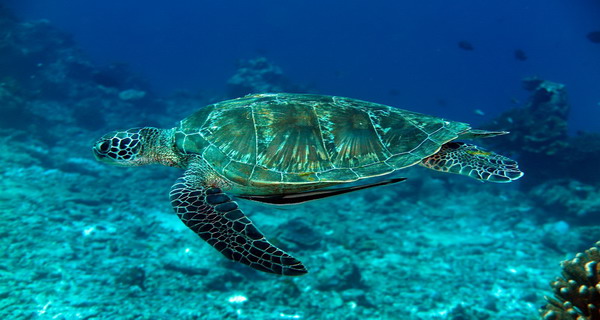
Koh Ha
Koh Ha small rocky island located roughly in the centre of the Park, just a few hundred meters to the east of the big sister Koh Miang. It has no beaches but it's still one of the most visited by day trip boats to do snorkelling. Its reef also offers great opportunities for divers, with some of most beautiful dive spots in the Similan Islands. Its Anita’s Reef is one of top five dive sites of Park. It is situated on the east coast of Koh Ha, and consists of a gentle sandy sloped reef interspersed with patches of staghorn coral, table corals and large coral bommies covered with soft corals, sponges and colourful gorgonian sea fans. The main attraction here is a huge coral bommie in the south-east of the site. It rises from the sandy bottom at more than 20 meters deep to just 12 metres below sea surface. Hide Away Bay is another interesting dive site close to Koh Ha. Also known by divers as Barracuda Point, it is located a bit further south-west of Anita’s Reef. The site combines the two different topographies of diving in the Similan Islands, with the southern part characterized by large granite boulders and the northern section made of fringing coral reef. The coral reef in the northern area starts from 7 metres below sea, with an average depth of 12 metres and a maximum depth of 25 m. It consists mainly of hard and soft corals, interspersed with colonies of staghorn, gorgonian sea fans and coral bommies of various sizes. The southern section of Hide Away Bay is deeper. Here the large boulders descend down to more than 35 meters on a sandy bottom. Besides the usual reef fishes, the marine life in Koh Ha’s dive sites includes other larger specimens like Wrasse Napoleon and Black Tip Sharks. In the surrounding waters swim large schools of pelagic fish, such as various families of Snappers, Soldierfish and Fusiliers. On the sandy bottom you will find rare Blue Spotted Stingray and Spotted Garden Eel.Read More

Koh Payu
Koh Payu is a middle sized island between Koh Miang and Koh Similan. The lush island has a narrow white sandy beach on its north eastern side which is surrounded by a beautiful shallow reef, one of the nicest spots for snorkelling into Park. In the southeast coast there is also East of Eden, which is no doubt one of the best dive spots of Similan Islands and probably one of most famous in Thailand. Feature of this site is a colourful reef that starts 5 metres below sea level that, after a slow initial slope, steeply reaches the depths of 35 metres with an average diving depth of 20 metres. The site is home to the biggest coral head called "The Orchid Garden", which starts at 25 metres and rises up to 12 metres covered with violet and blue corals, staghorn coral, pore corals, orange and red gorgonian sea fans, colourful anemones and bommies. This reef is really stunning for underwater macro photography. Here you will find a huge density of all the reef fishes that the Andaman Sea can offer including Hawksbill Turtles, Ribbon Eels, Frogfish, Blue-ring Angelfish, Clown Triggerfish, Pipefish, giant Moray Eels, Butterflyfish, Royal Angelfish, Lionfish, Jackfish and Sea Snakes. In the surrounding waters are large schools of pelagic fish, such as Amberjack, Dorado, Barracuda and Trevally. The deeper end of the reef is a sandy seabed, home to Groupers, Stingray, Black Tip and Leopard Sharks. Located just off the north coast of Koh Payu there is Deep Six, which is one of the most exciting dive sites in the Park. The site consists of giant granite boulders to form a V-shaped ridge, which starts just 5 metres below the sea surface and then descend dramatically to more than 40 metres deep. Either sides of ridge are rich of canyons, tunnels, swim-throughs and caves, among them the main is a large cavern at the anchoring point of the buoy line. Clusters of other smaller boulders are scattered all around. Along the reef the marine life is prolific with a huge variety of fish and invertebrates, such as Octopus, small Lobsters, Blue Sea Stars, Sea Cucumbers, Shrimps and Crabs. Closer to the reef or hidden among crannies, corals and anemones you'll see Nudibranches, Parrotfish, Emperor Angelfish, Frogfish, Clownfish, Pipefish or predators as Lionfish, Scorpionfish, Moray Eels and occasionally Turtles. Outside the reef in hunt there are large schools of Barracuda, giant Trevally and Dogtooth Tuna. Lucky divers have also reported few sightings of Manta Ray and Whale Shark.Read More
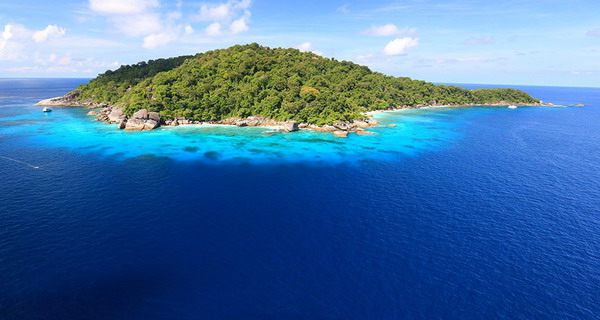
Koh Hin Pusar
Koh Hin Pusar is just a rocky outcrop 1 km south of Koh Similan. It was considered the best diving site of the archipelago and one of the most beautiful in the world before its closure. Fantasy Reef has been closed to all diving activities more than once since 1999 due its condition had significantly deteriorated. The site consists of huge granite formations that starting from a depth of 9-12 metres drop down to the sea bottom at about 40 metres. The granite boulders, which were covered by one of the most beautiful coral reefs of the Similan Islands, are today subject to a marine regeneration programme.Read More
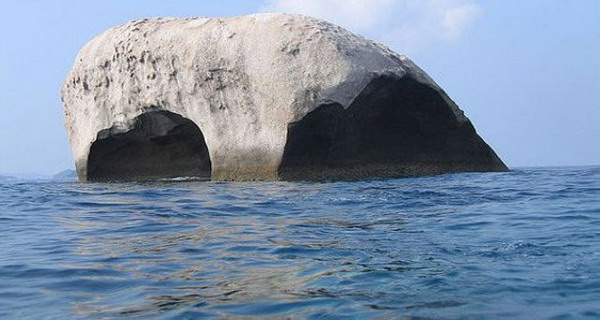
Koh Ba-Ngu
Koh Ba-Ngu is the northernmost of the original nine islands of the Park. The tiny island has a curious irregular shape, which for someone resembles a skull. The shoreline is dotted with piles of granite rocks of different shapes and sizes. Koh Ba-Ngu is surrounded by one of the most exciting coral reefs of Park, according to the divers, with several dive spots. Among these the most famous are Christmas Point and North Point. Christmas Point is located just off a small bay in the western tip of island. The dive spot consists of a cluster of submerged boulders and pinnacles on a relatively flat sandy seabed. With a diving depth between 10 and 40 metres, it offers an exciting drop-off with tunnels, hollows, caverns and huge collapsed stones where can swim through. The rock formations are covered with colourful soft corals and gorgonian sea fans. Christmas Point derives its name from the numerous vivid red, yellow and green corals that cover the walls of its caverns like a 'Christmas Tree'. North Point is one of the most challenging dive sites in the Similan Park. Also known as Triple Arches or Golden Arches, it is just 50 metres off north shore of Koh Ba-Ngu. North Point is the other most popular dive spot and it also one of the most challenging in all Similan Park. Also known as Triple Arches or Golden Arches, it is just 50 metres off north shore of Koh Ba-Ngu. The dive site is characterized by a cluster of huge submerged boulders, which are scattered out away from the island towards to the north. The granite formations begin 8 meters below the surface and then drop down dramatically to a sandy bottom at about 40 metres deep. Along both granite formations the marine life is prolific with a wide variety of species to be admired and photographed, such as Lobsters, Shrimps, Angelfish, Clownfish, Pipefish or predators as Lionfish, Scorpionfish, Moray and Ribbon Eels.Read More

 Get to Similan Islands & Weather
Get to Similan Islands & Weather
All along the west coast of southern Thailand, where lie the Similan Islands, the best weather conditions exist from November to April. A cool dry period, characterized by a constant sunny weather, the average temperatures are between +27° C and +33° C, the surface conditions are generally calm and the water temperature is between 26° C and 30° C. The speedboat tours and dive cruises to the archipelago run daily 1st November until 1st May, but dates may vary each year, during the monsoon season the Park is closed due rough sea. Please note that Koh Hu-Yong, Koh Pa-Yang and Koh Pa-Yan are closed for public, due to turtle hatching protection program and reef conservation. Access to Koh Pa-Yan is also strictly forbidden because it belongs to a Thai princess. Koh Tachai will be closed to tourists indefinitely beginning 15 October 2016 to allow it to recover from the effects of mass tourism. Fishing is banned in all surface of Similan National Park. Rangers are resident on different islands to control the behaviour of visitors and their respect of this uncontaminated environment.
The Similan Park is located 65 km off the coast of Khao Lak, Phang Nga Province. The nearest access to the Similan Islands is Thap Lamu, a small fishing village located just 15 km from Khao Lak, 90 Km north of Phuket and 120 from Krabi. From its piers depart all boats to Mu Koh Similan Marine Natural Park. Journey time from Thap Lamu Pier is around 70 minutes. The round trip is performed by large offshore speedboats with engine powers which are close to 750 hp. The Park is easily accessible from all seaside resorts in southern Thailand with daily excursions and even multi-day cruises for diving enthusiasts. The streets of Khao Lak, Phuket or Krabi are full of tourist agencies and kiosks selling the packages offered by many authorized tour operators. Beware and compare rates before choosing between them, considering not only the cheaper price but also the quality of the proposed service. The majority of these tours provide the transfer by minivan from your hotel with departure at about 06.30; the roundtrip by speedboat from Thap Lamu Pier; the visit of Koh Ha and Koh Payu to enjoy snorkelling and swimming; a long stop for lunch buffet and relax on Koh Miang; the visit of Koh Ba-Ngu, the northernmost island of Park, to snorkelling, and in finally another long stop on Koh Similan, the main island, to enjoy the beach and climb to the viewpoint on the Sailing Rock. The departure time from the Similan Islands is at 15.00; the arrival time at the hotel is between 19.30 and 20.00. Prices of tours range from 2,800 to 3,500 THB depending on the company and eventual options chosen, and include refreshment on board, the lunch buffet, snorkelling equipment, tour guide, insurance and National Park admission fee, 500 THB for adult and 300 for children. The tours which cost less usually provide fewer stops on the islands. Are also available tours which provide an overnight stay in a tent or bungalow for a day or two. The cost of excursion is relatively low, when you consider the distance from the coast of these wonderful islands, and the cost of the transfer by minivan services from Khao Lak, Phuket or Krabi.
Find the best Hotel in Phuket at "Lowest Price"
Find cheapest airfare to Thailand
Reach Phuket & Move Around





